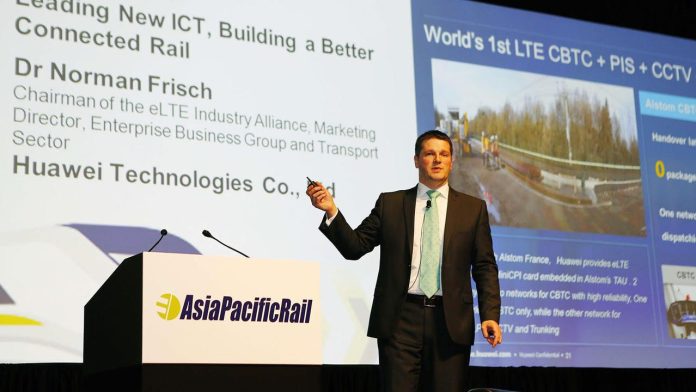Commercial and public safety companies are moving inexorably away from TETRA based communications and embracing LTE-based technologies, Chinese vendor Huawei company told Enterprise IoT Insights following the launch of its new eLTE Multimedia Critical Communications System (eLTE MCCS) at Critical Communications World (CCW) in Berlin last week.
Huawei’s eLTE system will encourage narrowband networks to be phased out, the company said, by encouraging public safety agencies to upgrade to new private LTE-based networks, including those based on 3GPP, ITU and MulteFire standards.
Norman Frisch, in charge of mission critical communications for the government, aviation and rail sectors for Huawei’s enterprise division, noted the industry backing for LTE-based emergency communication, including from the Tetra and Critical Communications Association (TCCA).
“The message is clear from the market and from the TCCA – they want LTE to become the new standard of communications. Some companies are playing catch-up as they believe that TETRA is still viable, and in some cases it is, but for us, there is no doubt that LTE solutions should be the new go-to,” said Frisch.
Frisch, also chairman of eLTE Industry Alliance, suggested the hype around 5G is distracting, in the context of the immediate task of upgrading critical communications to LTE-based networks.
“It’s a shame that we’re already seeing people trying to move to 5G services – there is so much that could still be done with LTE. Long Term Evolution, the clue is in the name. There is no standard available for 5G, so it just seems like faster solutions are just being packaged up as such,” he said.
Licensed narrowband technologies, like LTE Cat-M1 (LTE-M) and narrowband IoT (NB-IoT), will break down silos across multiple sectors, from smart city operations through to consumer services. “We’re already seeing these silos being broken down, it’s already happening,” said Frisch.
“Automotive manufacturers have put smart sensors in airbags so when someone is in a car accident and their airbags go off, the manufacturer can inform emergency services and provide location using mobile connectivity. This is an example of the silos being broken down between business applications of IoT and consumer ones.”
Huawei is offering network management solutions to network operators of every type, said Frisch. “As long as the spectrum is there, licensed or unlicensed, we can provide the services organisations need… While LTE is absolutely the way forward, some customers don’t feel the need to invest in a new network, so we provide an open API to allow them to use an existing network, with the additional software services we provide.”
He added: “While we support other products through our open API, working with our own products means we can offer a better service to our customers.”

